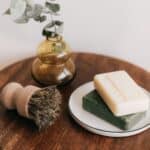When it comes to refurbishing old furniture, the final step is often the most important: waxing and sealing. This process not only protects your furniture from wear and tear, but also gives it a beautiful shine that will make it look brand new. In this post, we will explore the techniques for waxing and sealing your furniture, as well as some tips for achieving the best results.
Waxing Your Furniture
The first step in waxing your furniture is to choose the right wax. There are many different types of wax available, including beeswax, carnauba wax, and paraffin wax. Beeswax is a popular choice for furniture because it is natural and gives a warm glow to wood surfaces. Carnauba wax is often used on floors because it is hard and durable. Paraffin wax is the most common type of wax and is often used as a base for other waxes.
Before you start waxing, you will need to clean your furniture thoroughly. Use a soft cloth to remove any dust and dirt from the surface. If there are any stains or marks on the furniture, you may need to use a cleaner or sandpaper to remove them.
Once your furniture is clean and dry, you can begin waxing. Apply a thin layer of wax to the surface of the furniture using a soft cloth or brush. Make sure to cover the entire surface, including any crevices or corners. Let the wax dry for a few minutes, then buff the surface with a clean cloth. Repeat this process until you have achieved the desired shine.
Sealing Your Furniture
After you have waxed your furniture, it is important to seal it to protect the surface from damage. Sealing also helps to preserve the shine of the wax and make it last longer.
The most common type of sealer for furniture is polyurethane. This is a clear, waterproof coating that is applied to the surface of the furniture. Polyurethane comes in both oil-based and water-based formulas. Oil-based polyurethane is more durable, but water-based polyurethane dries faster and has less odor.
To apply polyurethane, use a brush or roller to apply a thin layer to the surface of the furniture. Make sure to cover the entire surface, including any crevices or corners. Let the sealer dry for a few hours, then sand the surface lightly with fine-grit sandpaper. Repeat this process until you have achieved the desired level of protection and shine.
Tips for Achieving the Best Results
Here are some additional tips to help you achieve the best results when waxing and sealing your furniture:
- Always work in a well-ventilated area to avoid inhaling fumes from the wax and sealer.
- Use a soft cloth or brush to apply the wax and sealer to avoid scratching the surface of the furniture.
- Apply thin layers of wax and sealer to avoid buildup and uneven surfaces.
- Let each layer of wax and sealer dry completely before applying the next layer.
- Sand lightly between layers of sealer to remove any bumps or imperfections.
Conclusion
Waxing and sealing your furniture is an essential step in the refurbishing process. By choosing the right wax and sealer and following these techniques, you can achieve a beautiful finish that will protect your furniture for years to come.






These 10 innovative and imaginative DIY home decor ideas from [object Object] provide a refreshing approach to enhancing ones living…